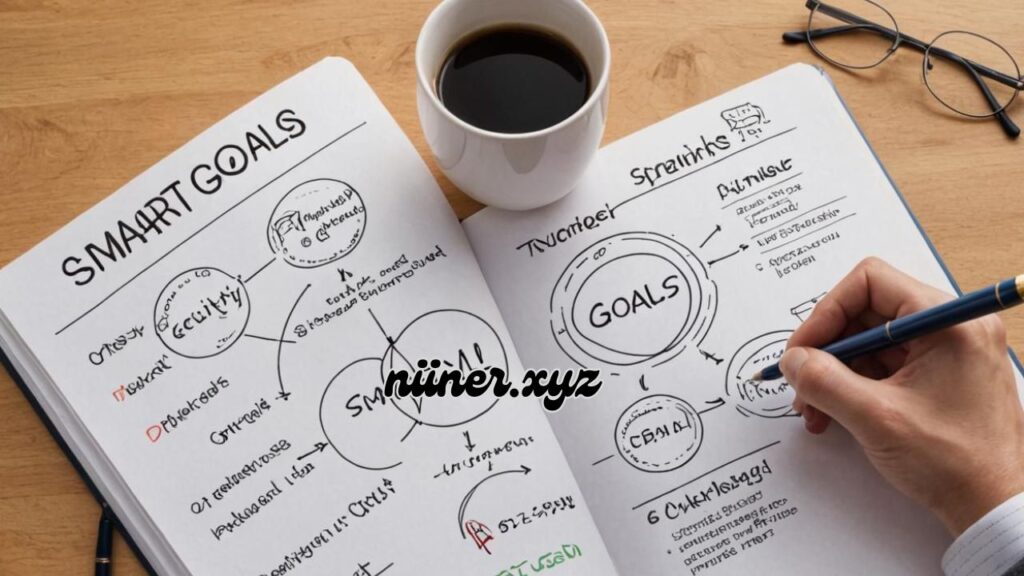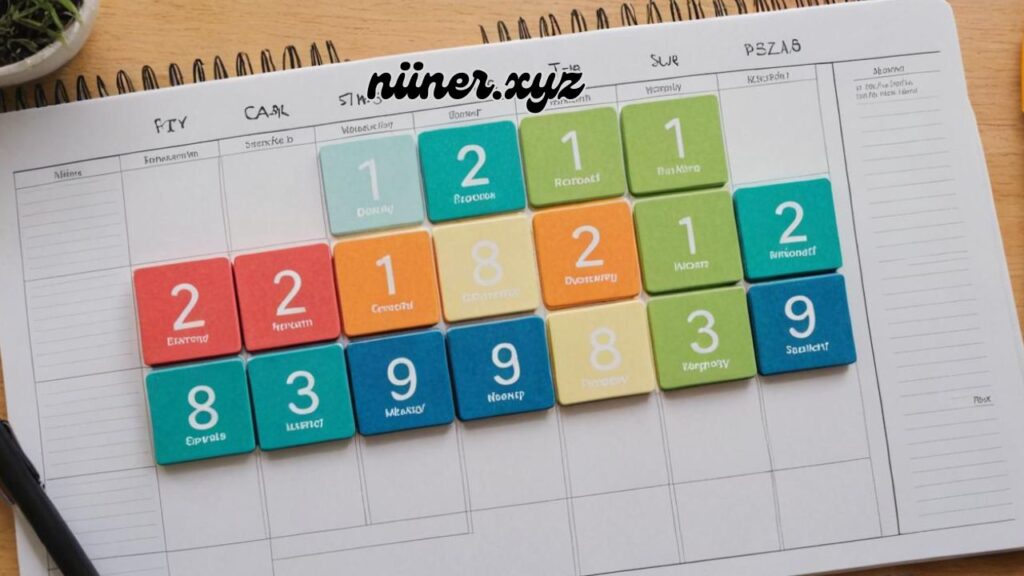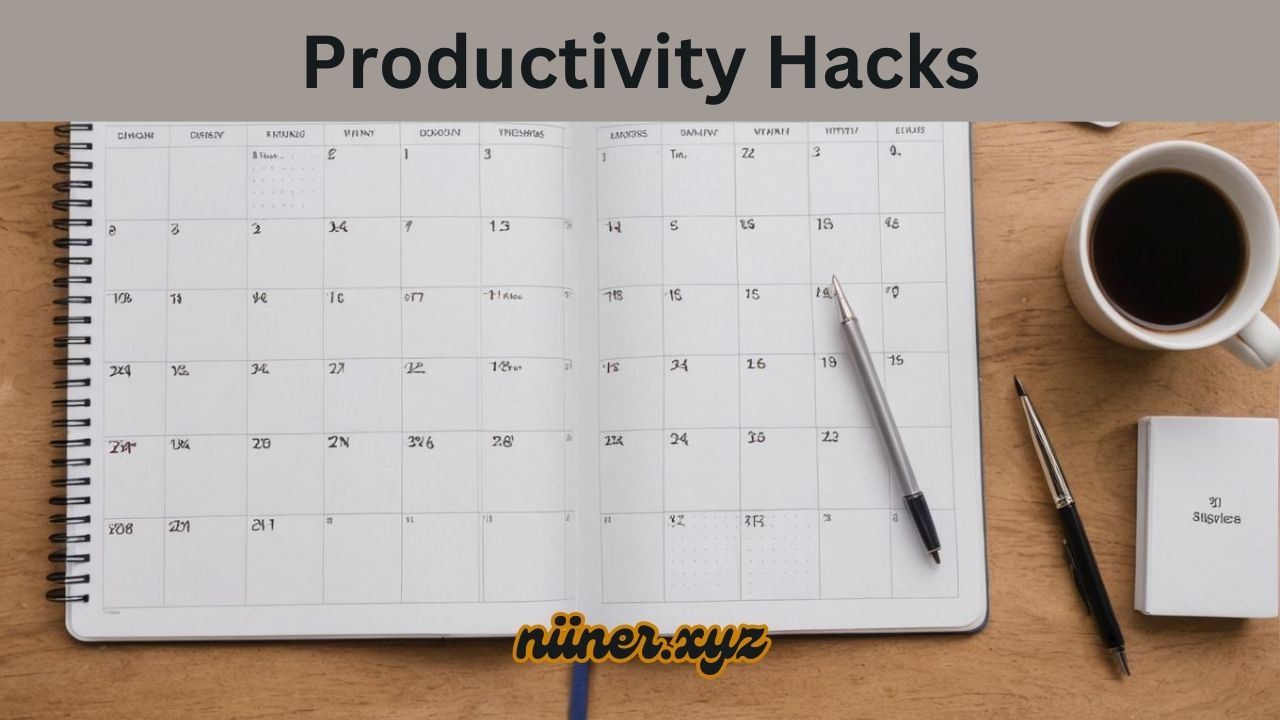Productivity Hacks to Planning Out Your Work Week
Feeling overwhelmed by endless tasks and a cluttered schedule? If so, you’re not alone. Efficient planning can transform your work week from chaotic to calm, leaving you with more time to focus on what truly matters. Here’s a complete guide to mastering productivity hacks to plan your work week effectively.
Table of Contents
Start with a Weekly Review
Taking time to reflect is your secret weapon for better planning.
Why It Matters:
A weekly review lets you evaluate past achievements and identify pending tasks. It’s your opportunity to assess your goals and align them with upcoming priorities.
How to Do It:
- Dedicate 15–30 minutes every Sunday or Monday.
- Review last week’s completed tasks and missed opportunities.
- Identify what worked well and what caused delays.
- List top priorities for the upcoming week.
This reflective process ensures you’re starting on a solid foundation rather than diving in blindly.
Set SMART Goals

Goals without a plan are just dreams.
What Are SMART Goals?
- Specific: Clearly define what you aim to achieve.
- Measurable: Establish criteria for success.
- Achievable: Keep it realistic.
- Relevant: Align with broader objectives.
- Time-bound: Set a deadline.
Example:
Instead of saying, “I want to write articles,” say, “I will write three 1,000-word articles by Friday.”
Setting SMART goals gives direction and makes progress measurable, keeping you motivated throughout the week.
Prioritize with the Eisenhower Matrix
Not all tasks are created equal.
What It Is:
A decision-making framework that categorizes tasks based on urgency and importance.
| Urgent | Not Urgent |
|---|---|
| Important | Do it now |
| Not Important | Delegate |
How to Use It:
- Divide tasks into these categories.
- Focus on “important and urgent” tasks first.
- Schedule “important but not urgent” tasks proactively.
- Delegate or eliminate less critical tasks.
This tool helps declutter your to-do list, ensuring you’re working on what truly matters.
Block Your Time Strategically

Time blocking is a game-changer for productivity.
How It Works:
- Break your day into chunks of time dedicated to specific activities.
- Assign high-focus tasks during your most productive hours (e.g., morning for many).
- Reserve less intense tasks for energy dips in the afternoon.
Example:
- 9:00–11:00 AM: Deep work (writing, analysis)
- 11:00–12:00 PM: Respond to emails
- 1:00–3:00 PM: Client meetings
- 3:00–4:00 PM: Administrative tasks
This structured approach minimizes distractions and keeps your day on track.
Use the Power of Three
Keep things simple with a focused daily agenda.
What It Means:
Pick three high-priority tasks to accomplish each day.
Why It Works:
The Power of Three prevents overwhelm while ensuring progress on meaningful tasks.
Pro Tip:
Write these three tasks the night before to jump-start your morning with clarity.
Leverage Technology and Tools
Make your life easier with productivity apps.
Top Recommendations:
- Trello or Asana: Visual task management.
- Google Calendar: Time blocking and scheduling.
- Notion: All-in-one workspace for notes, tasks, and projects.
- RescueTime: Track and analyze time usage.
These tools streamline planning, track progress, and eliminate inefficiencies.
Practice Batch Processing
Say goodbye to multitasking.
What It Is:
Grouping similar tasks together and tackling them in dedicated time slots.
Examples:
- Responding to all emails at once instead of throughout the day.
- Scheduling social media posts for the week in one sitting.
Batch processing reduces context switching, saving valuable mental energy.
Build Buffer Time into Your Schedule
Avoid back-to-back burnout by scheduling breathing room.
Why It’s Crucial:
Buffer time allows for unforeseen delays and prevents tasks from running over into the next.
Example:
If a meeting is scheduled for 1:00–2:00 PM, block 2:00–2:30 PM for notes or follow-ups before jumping into your next activity.
This simple hack maintains momentum without feeling rushed.
Eliminate Distractions
Distractions are productivity killers.
How to Minimize Them:
- Use website blockers like Freedom to stay focused.
- Turn off non-urgent notifications.
- Set boundaries with colleagues or family during work hours.
Creating a distraction-free environment maximizes your efficiency.
End the Week with a Wind-Down Ritual
Close out the week on a high note.
What to Do:
- Review your accomplishments.
- Update your progress on long-term goals.
- Plan initial tasks for the next week.
A thoughtful wind-down sets a positive tone, helping you relax and recharge.
Conclusion
Planning your work week isn’t about rigid schedules—it’s about creating a flexible, efficient system tailored to your needs. By incorporating these productivity hacks, you’ll not only accomplish more but also enjoy greater work-life balance. Start implementing these tips today, and watch how they transform your routine!
FAQs
1. What’s the best day to plan my work week?
Sunday or Monday mornings are ideal as they give a clear start to the week.
2. How do I stay motivated to follow my plan?
Break tasks into smaller steps, celebrate wins, and avoid overloading your schedule.
3. Can I plan without using productivity tools?
Absolutely! A simple notebook or planner works just as well if digital tools aren’t your thing.
4. How long should a weekly review take?
15–30 minutes is enough to reflect and plan effectively.
5. What’s the key to avoiding burnout while staying productive?
Incorporate buffer time, prioritize self-care, and delegate tasks when possible.

